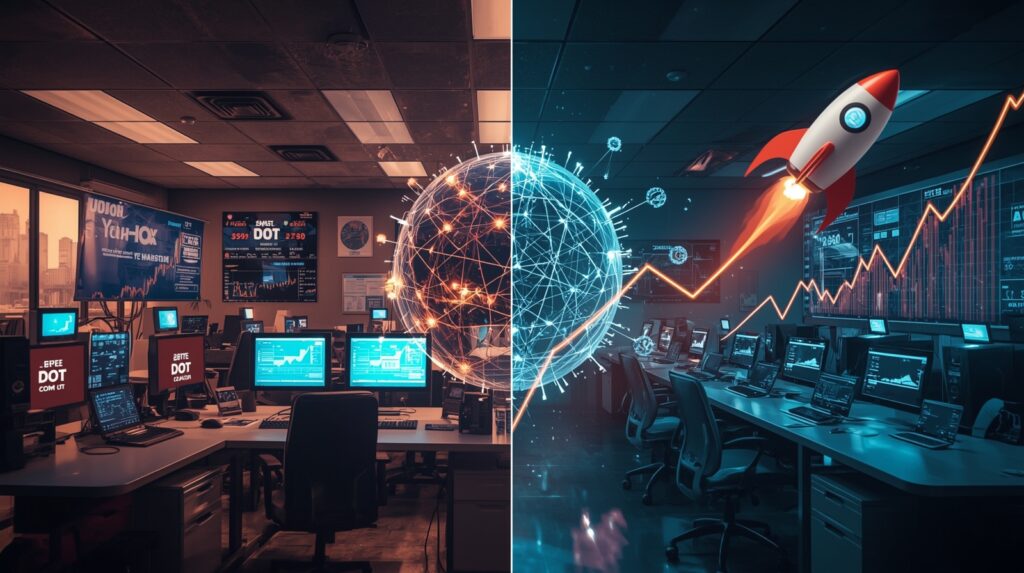
AI CERTS
5 months ago
🌐 AI Boom vs. Dot‑Com Bubble: A Revolution or a Rerun?
Let’s dissect the similarities, the warning signs, and the reasons AI might just be the real deal this time.

Historical Echoes: The Dot-Com Bubble
The late 1990s saw investors pouring money into internet startups with little more than a catchy name and a ".com" domain. Stock prices soared, IPOs flooded the market, and speculation replaced strategy. By 2000, the bubble burst—leaving behind a scorched tech landscape and shattered investor confidence.
Key traits of the dot-com bubble:
- Exponential valuations with minimal revenue
- Herd-like VC behavior
- Speculative media hype
- Lack of real-world use cases at scale
Similarities with Today’s AI Boom
Fast-forward to 2025, and the AI boom is triggering similar trends:
- Skyrocketing valuations: Startups like OpenAI and Anthropic are valued in the tens of billions.
- Flood of funding: AI startups raised over $50 billion globally in 2024 alone.
- Overpromising headlines: AI will “replace 80% of jobs” or “build AGI by next year.”
- FOMO investing: Companies are rushing to integrate “AI” just to stay relevant, much like they added “.com” in the ‘90s.
Key Differences: Why AI Isn’t Just a Rerun
While surface similarities exist, AI’s current trajectory has critical differences from the dot-com era.
1. Real-World Impact Is Already Here
Unlike many dot-com startups, AI tools like ChatGPT, Gemini, and Claude Sonnet 3.5 are already transforming industries—automating workflows, enhancing diagnostics, and personalizing education.
2. Tangible Revenue Streams
Top AI companies have legitimate business models—charging for APIs, subscriptions, and enterprise software.
3. Enterprise-Backed Growth
Today’s AI leaders are backed by tech giants like Microsoft, Google, and Amazon, unlike the isolated newcomers of the dot-com era.
4. Infrastructure & Cloud Maturity
Modern AI is built on cloud and GPU infrastructure that simply didn’t exist in 2000. This allows AI tools to scale quickly and deliver consistent value.
Risk Factors: The Caution Signs Remain
Despite these positives, the AI market is not immune to bubble-like behaviors:
- Talent hoarding and overhiring may lead to future layoffs
- Hype cycles can distort realistic expectations
- Regulatory uncertainty could stall innovation
- Over-dependence on VC cash flow rather than profitability
Investors and businesses should approach the AI gold rush with strategic foresight—not blind optimism.
Is This Time Different?
Yes—and no.
Like the internet, AI is likely to undergo its own market corrections. Some startups will fail, overvalued unicorns may collapse, and expectations will recalibrate. But unlike the dot-com bubble, AI already has product-market fit across multiple sectors: finance, healthcare, logistics, media, education, and beyond.
This isn’t just a rerun—it’s a refined revolution.
Conclusion
The AI boom might feel eerily similar to the dot-com frenzy, but its foundations are far more solid. While caution is wise, cynicism could mean missing out on the most important tech shift since the internet.
If you found this article insightful, you’ll love our deep dive into AI Is Fueling a U.S. Economic Surge: The Future Is Now
Learn more about our certifications at the AI CERTs Store.



